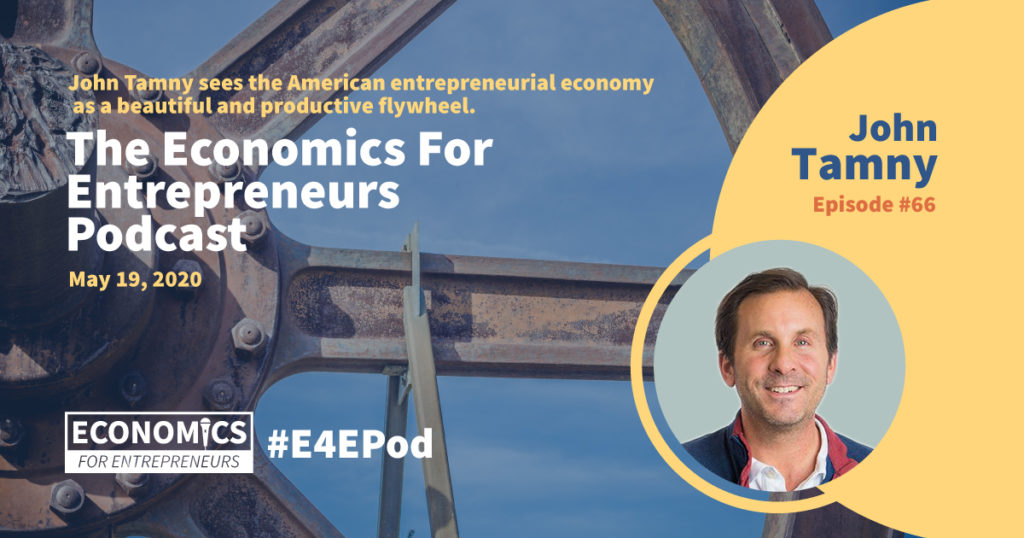Entrepreneurs Don’t Meet Needs, They Lead Needs

John Tamny is the clearest writer on business and economics because he is the clearest thinker. While some of us struggle to understand or define how entrepreneurs meet unmet needs, he transcends the limitation of that thinking. He reframes the problem: entrepreneurship is creating needs not meeting them. How do entrepreneurs pull this off? By being oddballs.
When Cato Institute co-founder Ed Crane was building the libertarian movement in the 1970s, he came across a lot of self-proclaimed conservatives. What’s notable about this is that in getting to know some of them, Crane sensed they weren’t as they described themselves.
While they once again identified as conservatives based on their belief in limited government, Crane found that quite unlike traditional conservatives they were skeptical about military interventionism, plus they felt government had no say in personal issues of the bedroom variety. Crane sensed they were libertarians but didn’t know it.
From this discovery, Crane turned what was a fringe ideology in the 1970s into a credible, enduring movement that includes the Cato Institute, the world’s most prominent libertarian center of opinion. While he probably could have successfully told conservatives what they imagined they wanted to hear, Crane led their thought. Conservatives they were not.
This came to mind while reading a recent Washington Post obituary for British designer Mary Quant. Most readers probably haven’t heard of her, but as the Post’s Harrison Smith wrote, Quant “popularized the miniskirt while helping dress Swinging Sixties London. ”What’s important about Quant is that the London she ultimately dressed didn’t initially wear clothes as she felt they should.
As Smith reports, when Quant opened her first London boutique in 1955 (Bazaar), British fashion was “staid and demure.” Call it conservative. Quant was anything but. Smith writes that Bazaar was “was raucous and unrestrained, featuring music, drinks, late-night hours and quirky window displays that showcased sleek tunic dresses, tights and miniskirts that seemed to get shorter each year.” Quant wasn’t giving customers what they wanted, because if she had her boutique would have been “staid and demure.” Quant would instead lead her customers to where she felt they really wanted to go, but perhaps didn’t know it.
As Quant so perfectly explained it, she “didn’t have time to wait for women’s lib.” Entrepreneurs generally don’t have time, and they don’t precisely because they’re taking needs and thoughts in an entirely new direction. Rather than meeting needs, they’re creating them. And it’s easy to go bankrupt creating a need since time is so very much of the essence. Change is difficult. Quant invented a different fashion future, and did so very successfully.
While older, more conservative men would literally yell “degenerate” and “obscene” in front of Bazaar, Quant wasn’t to be deterred. She had a plan to dress women in clothes that would give them “that feeling of freedom and liberation.” And it worked as evidenced by the fashion that defined1960s London.
Crane recalls that in the early days of libertarianism, the thinking and those thinking it were radical not just in thought, but also in appearance. That Crane sensed a movement could be built from what was “rag tag” and fringe made him a small minority of if not one, close to it. Politics was “conservative” in appearance on both sides of the ideological divide, only for Crane to sense a need for a new way of looking at policy that was neither liberal nor conservative. Quant would have recognized the opposite thinker in Crane. As she once put it, “People call things vulgar when they are new to them. When they have become old, they become good taste.” Absolutely. While libertarianism was populated by oddballs in the 1970s, by the 2000s and beyond numerous CEOs, financial elites, and celebrities were describing themselves as libertarian.
Out for drinks in Washington, D.C. around 13 years ago, I told my date that I was “libertarian. ”She told me “libertarian is such a cliché nowadays.” Precisely. The main thing is that it wasn’t always cliché or mainstream, nor were miniskirts always mainstream. Someone’s got to lead. This is what entrepreneurs do.
John Tamny is editor of RealClearMarkets, Vice President at FreedomWorks, a senior fellow attheMarket Institute, and a senior economic adviser to Applied Finance Advisors(www.appliedfinance.com).His latest book isThe Money Confusion: How Illiteracy AboutCurrencies and Inflation Sets the Stage For the Crypto Revolution.







Responses